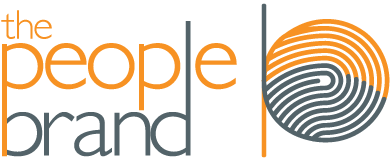 In eighth grade, I walked into the school cafeteria and decided I was going to do something different. Where students sat during lunchtime indicated how popular you were and which group you belonged to. There were groups for jocks, cheerleaders, band members, skaters and–to break away from the Breakfast Club stereotypes of the ’80s–we had a table for the cowboys in rural Oklahoma.
In eighth grade, I walked into the school cafeteria and decided I was going to do something different. Where students sat during lunchtime indicated how popular you were and which group you belonged to. There were groups for jocks, cheerleaders, band members, skaters and–to break away from the Breakfast Club stereotypes of the ’80s–we had a table for the cowboys in rural Oklahoma.
I had friends in different groups and often had a hard time deciding where to sit. This day, I was going to do something different. I arrived to the lunch room early and decided to sit at a table by myself. Then anyone could join me. But, in what sounds like a plot line to a John Hughes film, no one did. At the time, I took it personally. Looking back, it is obvious that no one would sit with me. The stakes were too high. Sitting with a large group was safe and gave you a sense of belonging.
It’s understandable that kids at school would sit where they belong and feel safe. But at work, these decisions shouldn’t be made because of popularity or social status. At the same time, the decision of where you sit should be intentional, so it increases your potential for success. If it’s possible where you sit could increase your success, why would you leave it to chance?
So, how can you determine where to sit at work (and don’t end up eating lunch alone)?
Where you sit should give you energy
There has been a growing trend of people working remotely. Part of the argument has been that people could get more work done from home or a coffee shop. Some people find the open setting of a cafe, with the white noise of other conversations and activity, gives them more energy than the drab mood of their office. Some offices are incorporating the elements of these cafes into their work place. They’re also seeing the importance of providing plenty of natural light and options for standing or lounging while working. Research from the world’s leading office furniture manufacturer Steelcase backs this up.
When the workplace supports postures ranging from sitting and standing to leaning and perching, workers can become more active, comfortable and will be better supported.
Where you sit should connect you with others
Often times, we group people together by function. Sales people by other sales people. Project managers amongst other project managers. These may not be the people with whom we need to collaborate in order to get our work done. David Siegel, CEO of Investopedia, doesn’t group his people by function. He has his eight member executive team sit near each other in an open space. He doesn’t have employees sit close to those they report to either. He explains in a recent article for MIT Sloan.
The best practice here is that individuals should sit near the function that you want them to collaborate with, not the function that they report into.
Where you sit should support your work style (in that moment)
Just because you collaborate with a group doesn’t mean you should always sit in an open space with them. Sometimes you need to avoid distractions and focus on work alone. Other times, you may need to work with a project team to pull together a deliverable. This makes it important to have options like a small huddle room for quiet focus work, or a meeting space with collaborative technology and white boards where you can share project information and work together.
When you see how choosing where to sit can increase success, then it becomes clear how important it is for leaders to be intentional in how their workplace is designed. It’s also critical for leaders to clearly communicate the importance of the workspace to their employees and give them the freedom to choose where and how they will work, based on what they need to get done in that moment.
Where you sit shouldn’t be like the lunch room in middle school. It’s not a popularity contest. It’s a key component to your success.
